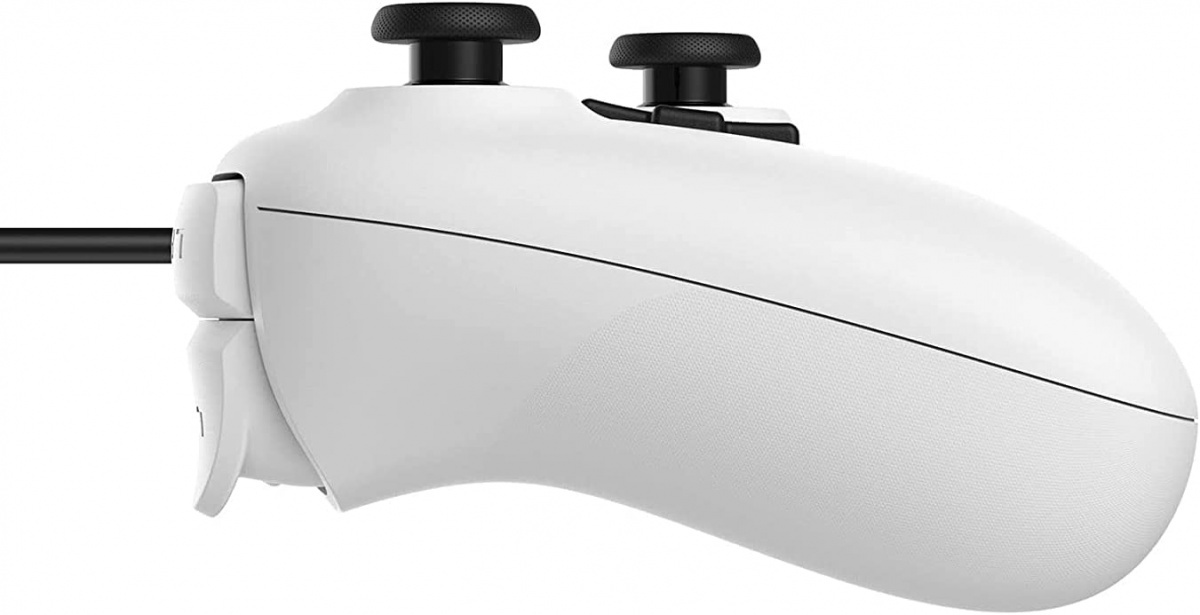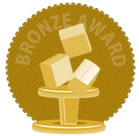
Some research is necessary for potential purchasers of the wired version of 8BitDo's Ultimate Controller, especially if intending to use it on Nintendo Switch. The reason for this research is that the company hasn't been particularly clear about what features this specific controller is lacking over its Bluetooth counterpart. Indeed, as much as there is plenty to like about the Ultimate Wired Controller, its selling features are almost entirely incompatible with Nintendo's console.
As the name suggests, this is strictly a wired-only controller, of which the cable isn't detachable, and has a USB-A male connector to plug into any computer or laptop. Its compatibility with other devices is good, able to play games on Windows 10 and above, Android 9.0 and above, Raspberry Pi, and the aforementioned Nintendo Switch, on firmware 3.0 or higher.
There is a premium quality design and feel to the Ultimate Wired Controller. It is lightweight but doesn't come across cheap like many floaty pads do, and can quite easily be compared to the Switch Pro or modern Xbox controllers in terms of design, especially with its asymmetrical stick layout. Featuring a matte finish with textured grips, this particular controller goes with the Xbox face buttons, too, with the A button at the bottom part of the diamond, whereas the Bluetooth version has Nintendo's historical format, with A on the right.

The sticks are definitely a high point, not feeling too slippy when the thumbs are in motion, but the d-pad is the standout as far as basic elements go. The classic plus shape, reminiscent of, or perhaps almost identical to, the SNES' own design, is large and allows for a nice rocking motion if rolling between different directions, and feels far easier to bash out more complex fighting game commands than most other controllers. Although not difficult to do, it blows Nintendo's own d-pad on the Switch Pro Controller out of the water.
The Plus and Minus (or Start and Select) buttons could have stood to be moved just a touch higher and wider apart so that the right thumb, in particular, doesn't graze the stick each time. As it is, these central buttons are a little bunched up in a group that also consists of the home button, a turbo function, and a profile switch button.
Turbo commands are easy to implement, with a hold of the turbo button and press of the desired one to be turned into auto-fire, and the same method again necessary to undo the function. The profile switch button allows for flicking between up to three stored profiles in the controller, which requires the use of the Ultimate Software Tool on PC in order to program specific user-tailored functions.

These functions include all manner of options, such as creating macros to perform difficult-to-pull-off moves in a fighting game and assigning that full command to one digital output; remapping buttons to suit your preferences, perhaps reversing the Xbox face button style to Nintendo's format; fine-tuning the ranges and sensitivity of the sticks and triggers; or altering the level of vibration on each side of the controller.
Of course, button remapping constitutes the ability to assign outputs to the two back paddle buttons on the grips of the controller. Labelled P1 and P2, these common additions to many so-called "pro" controllers (which really need to become a standard for official pads included in the box with consoles going forward) can be assigned almost any other standard button command, whether it be the A button, RB shoulder button, or even the right stick's click-in feature. Depending on the game, it can free up the thumbs to keep using the sticks while the fingers on the grips tackle the paddles.
There is no question that all of the added features of the Ultimate Wired Controller over standard pads make for a brilliant option for anyone that plays predominantly on Windows or Android devices. While the 1.8m cord length doesn't really allow for long-distance gaming, those that sit mostly in front of their computer won't mind the fact this is a wired product, but some extra meters could have benefitted Switch players whose system sits a distance away from their couch.

And as mentioned earlier, it is Switch owners that need to be aware of what can and cannot be utilised with this controller. The 8BitDo official product page and small instruction manual that comes in the box of the Ultimate Wired Controller are not clear in the fact that when using this as a pad on Nintendo's console, the paddle buttons, or indeed any of the customisable features of the device, such as remapped buttons, adjusted sensitivities for sticks and triggers, or programmable macros, are incompatible.
While the website has a tickbox to say the Ultimate Software Tool for PC is not supported for Nintendo Switch, this is far from being completely obvious as to what this means. There is no indication that the Ultimate Software Tool is necessary to program the paddle buttons, for example, and it would be reasonable to assume anyone looking at purchasing this as a Switch controller would believe the paddles would be operational when plugged into the system.
Furthermore, while the Bluetooth version has had a lot of fanfare about its Hall Effect control sticks - and rightly so - the wired controller is absent in this regard, lacking that drift-avoiding technology, which, again, can easily be missed or muddled when looking up details on 8BitDo's Ultimate Controller. Careful research is necessary to understand how the wired version is inferior.

None of this is to say the Ultimate Wired Controller is not a solid purchase for Nintendo Switch owners. Despite the inability to make use of the paddle buttons (which really would have been a handy feature for certain games) and other aspects that PC and Android titles are capable of getting the best out of, and aside from the unfortunate fact that many Switch functions, such as the capture button, gyro controls and NFC compatibility, are also non-existent, this is still a fair alternative or replacement to the Switch Pro Controller.
The build feels great, the thumbs acclimatise to the sticks naturally without slipping off, and the turbo button is always a handy component. It may quite easily become the default controller of choice for Switch players due to how comfortable and well-made it is, with chunky buttons and an excellent d-pad, the latter of which will go down well with plenty who play old-school games on the system.
PC and Android players are clearly going to get more bang for their buck, of course, what with the ability to make use of the core selling points of the controller. With the press of a single button, switching between up to three custom profiles with their own tailored commands, sensitivity options and button mappings means £30 is a bit of a steal for a controller that rivals and, in some respects, surpasses popular first party outputs.

Very Good - Bronze Award


 Sign In
Sign In 21.12.2022
21.12.2022
 Subscribe to this topic
Subscribe to this topic Features
Features





 Top
Top

